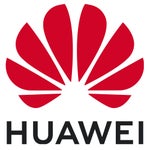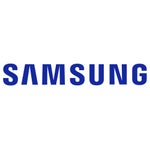News
iPhone Air Benchmarks Tested: A19 Pro Delivers 40% GPU Boost But Falls Behind Snapdragon 8 Elite
Apple’s iPhone Air packs the new A19 Pro chip into a sleek 5.6 mm body, delivering a 15% CPU uplift and 40% GPU boost over its predecessor. Despite its impressive single-core speed, the slim design leads to thermal throttling during extended use. Is the Air ideal for everyday tasks, or should you opt for a Pro model for sustained performance? Let’s find out.
The iPhone Air represents Apple's boldest design leap in years, prioritizing portability without completely sacrificing flagship performance. With prices starting at $899 for 128GB and climbing to $1,199 for 512GB, it sits between the standard iPhone 17 and Pro models in both price and capabilities.
Understanding the A19 Pro Chip Architecture
Before diving into benchmarks, it's helpful to understand what makes the A19 Pro special. Built on TSMC's advanced 3nm process, the chip features:
-
6-core CPU: 2 high-performance cores running at 3.78 GHz + 4 efficiency cores at 2.11 GHz
-
5-core GPU: One less graphics core than iPhone 17 Pro models
-
16-core Neural Engine: Enhanced AI processing capabilities
-
8GB Unified Memory: More RAM than previous Air models
This configuration strikes a balance between power efficiency and thermal management—critical for a phone this thin. For official details and the latest updates, visit official site.
Performance Highlights Explained
Benchmarks offer a snapshot of raw speed, but what do they mean for you?
CPU Performance Breakdown
The A19 Pro delivers impressive results across different workloads:
-
Geekbench 6 Multi-core: 9,497 points (15% ahead of A18 Pro)
-
Geekbench 6 Single-core: 3,775 points (outpacing Snapdragon 8 Elite by 20%)
-
AnTuTu 10 Overall: 2,095,675 points
In everyday terms, this means apps launch 10-15% faster, photo editing completes quicker, and multitasking feels more responsive. The single-core advantage particularly shines in tasks like web browsing, where most operations use just one processor core.
GPU Performance Analysis
Graphics improvements are more nuanced:
-
3DMark Solar Bay: 8,155 points (beating A18 Pro's 7,858)
-
3DMark Wild Life Extreme: 4,211 points (trailing iPhone 16 Plus at 4,324)
-
Ray-tracing performance: Up to 40% faster than A18 Pro
Thermal Throttling: The Trade-off Explained
Because the Air is so thin (5.6mm vs 8.25mm for iPhone 17 Pro), it struggles to dissipate heat effectively. Here's what happens under different usage patterns:
Short-term Performance (0-10 minutes)
-
Peak performance maintained across all benchmarks
-
No noticeable slowdowns in any apps or games
-
CPU operates at full 3.78 GHz clock speeds
Medium-term Usage (10-30 minutes)
-
Gradual performance reduction begins around 15 minutes
-
CPU speeds drop to approximately 3.2 GHz
-
Frame rates in games decrease by 10-15%
Extended Sessions (30+ minutes)
-
Performance stabilizes at roughly 75% of peak capability
-
Noticeable frame drops in graphics-intensive applications
-
Surface temperature reaches 42°C (108°F)
This thermal behavior affects different users differently based on their usage patterns.
Real-World Gaming Performance
Here's how the iPhone Air handles popular mobile games across different time periods:
Casual Gaming Excellence
For light gaming sessions under 20 minutes:
-
Candy Crush, Among Us, Subway Surfers: Perfect 60 FPS performance
-
Words with Friends, Solitaire: Zero performance issues
-
Social media scrolling: Buttery smooth animations
Moderate Gaming Considerations
Medium-intensity titles show mixed results:
-
PUBG Mobile (Medium settings): Starts at 40 FPS, drops to 32 FPS after 25 minutes
-
Call of Duty Mobile: High settings sustainable for 15 minutes before throttling
-
Fortnite: Smooth at medium settings but requires periodic cooling breaks
Intensive Gaming Limitations
High-end mobile games reveal thermal constraints:
-
Genshin Impact: Beautiful at launch, requires low settings for extended play
-
Asphalt 9: Impressive initially but frame rates become inconsistent after 20 minutes
-
GRID Autosport: Playable but not ideal for racing enthusiasts seeking consistent performance
Gaming Tip: Enable Low Power Mode during extended gaming sessions to maintain more consistent frame rates by preventing the processor from reaching peak temperatures.
Competitive Analysis: Android Flagships
Current Competition (Snapdragon 8 Elite)
Against Samsung Galaxy S25 series and other current Android flagships:
Where iPhone Air Wins:
-
Single-core performance leads by 15-20%
-
App launch speeds and iOS optimization advantages
-
Superior video recording quality and computational photography
Where Android Leads:
-
Multi-core performance: Galaxy S25 Ultra scores 9,846 vs Air's 9,497
-
Sustained gaming performance thanks to larger thermal designs
-
More RAM options and faster charging speeds
Future Android Threats
Upcoming Snapdragon 8 Elite Gen 5 processors show concerning trends for Apple:
-
Projected multi-core scores: 11,500+ (vs Air's 9,497)
-
Single-core performance: Nearly matching A19 Pro's 3,775
-
Improved power efficiency: Competing directly with Apple's advantages
AI and Machine Learning in Daily Use
The A19 Pro's enhanced Neural Engine brings practical AI improvements you'll notice:
Photography Enhancements
-
Smart HDR 6: Better balance in challenging lighting conditions
-
Portrait mode improvements: More accurate edge detection and bokeh effects
-
Night mode: Faster processing with less noise in low-light shots
iOS 18 Intelligence Features
-
Live Text recognition: 30% faster text extraction from images
-
Voice-to-text accuracy: Improved recognition of accents and background noise
-
Predictive typing: Smarter autocorrect with context awareness
Privacy-First AI Processing
Unlike Android devices that often send data to cloud servers, the A19 Pro handles most AI tasks locally, improving both speed and privacy. This means your photos, voice commands, and personal data stay on your device.
Battery Life Analysis
The iPhone Air's 3,149 mAh battery provides different endurance depending on usage patterns:
Typical Usage Scenarios
-
Light use (calls, texts, web browsing): 14-16 hours
-
Moderate use (social media, photos, streaming): 10-12 hours
-
Heavy use (gaming, video editing, GPS): 6-8 hours
Charging Performance
-
0-50% charging: 28 minutes with 20W adapter
-
0-80% charging: 52 minutes
-
Full charge: 85 minutes
-
MagSafe wireless charging: 15W maximum (75 minutes for 50%)
Battery Tip: The ultra-thin design means less room for battery capacity. Consider Apple's $99 MagSafe Battery Pack for extended usage days.
Professional Use Case Analysis
Content Creation
For mobile content creators, the iPhone Air offers mixed capabilities:
-
Photo editing: Excellent performance in apps like Lightroom Mobile and VSCO
-
Video editing: 4K editing possible but requires frequent pauses to prevent overheating
-
Live streaming: Capable of 1080p streaming but monitor temperature during extended sessions
Business and Productivity
Professional users will appreciate:
-
Microsoft Office suite: Smooth performance across Word, Excel, and PowerPoint
-
Video conferencing: Excellent quality for Zoom, Teams, and FaceTime calls
-
Document scanning: Fast OCR processing with enhanced accuracy
Storage and Configuration Recommendations
|
Storage Option |
Price |
Recommended For |
|
128 GB |
$899 |
Users who primarily use cloud storage and stream content |
|
256 GB |
$999 |
Most users with local photo and video storage needs |
|
512 GB |
$1,199 |
Content creators and users who prefer extensive local storage |
Should You Buy the iPhone Air?
Choose iPhone Air if you:
-
Prioritize the thinnest possible iPhone design
-
Use your phone mainly for browsing, streaming, and casual gaming
-
Want flagship single-core performance and AI features
-
Appreciate iOS ecosystem integration and long software support
-
Don't mind occasional performance throttling during intensive tasks
Choose iPhone 17 Pro instead if you:
-
Are a serious mobile gamer requiring consistent frame rates
-
Frequently edit videos or handle intensive creative workflows
-
Need the absolute best camera system with ProRAW capabilities
-
Prefer maximum battery life and don't mind extra thickness
-
Want vapor chamber cooling for sustained peak performance
Consider iPhone 17 standard if you:
-
Want better battery life than the Air at a lower price
-
Don't need the absolute thinnest design
-
Prefer the reliability of proven thermal management
Future Outlook and Apple's Design Philosophy
The iPhone Air represents Apple's continuing push toward impossibly thin devices, reminiscent of the original MacBook Air's impact on laptop design. However, physics still imposes limits on heat dissipation in ultra-thin form factors.
What's Next for iPhone Air
Expect future iterations to address thermal limitations through:
-
Improved chip efficiency: Next-generation processors with better performance-per-watt
-
Advanced materials: Potential graphene or vapor chamber integration in thin designs
-
Software optimization: Better thermal management algorithms
Industry Impact
The iPhone Air's thermal challenges highlight the ongoing tension between form and function in smartphone design. As competitors respond with their own ultra-thin flagships, thermal management will become increasingly critical for sustained performance.
Final Recommendations
Best for the iPhone Air:
If you value a feather-light design, top single-core speeds, and everyday AI features—and use your phone mainly for browsing, streaming, and light gaming—the Air delivers exceptional performance.
Consider iPhone 17 Pro if you:
Need consistent peak performance for heavy gaming, video editing, or professional workflows, and prefer advanced cooling and longer battery life despite extra thickness.
Related articles
-
What’s New in the iPhone 17 Air? Slimmer Design, eSIM Exclusivity, and Battery Case Enhancements!
-
How Slim the Apple iPhone 17 Air Is Compared to the iPhone 17 Pro
-
Apple wanted iPhone 17 Air to be a Port-Free Device – But What Changed?
-
iPhone 17 Air and Galaxy S25 Slim rumored Battery Capacities
-
iPhone 17 Air Battery Size Leaked – And It’s Even Smaller Than iPhone 16’s
-
iPhone 17 Air Chipset: A19 Pro Confirmed, But With a 5-Core GPU












